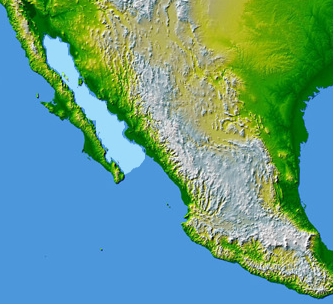NEWS NOTES ON SUSTAINABLE WATER RESOURCESGulf of Californiahttps://en.wikipedia.org/wiki/Gulf_of_California“The Gulf of California (Spanish: G...
Published on by Tim Smith, Employee at Retiree & P/T Consultant

Gulf of California
https://en.wikipedia.org/wiki/Gulf_of_California
“The Gulf of California (Spanish: Golfo de California), also known as the Sea of Cortés (Mar de Cortés) or less commonly as the Vermilion Sea (Mar Bermejo), is a marginal sea of the Pacific Ocean that separates the Baja California Peninsula from the Mexican mainland. It is bordered by the states of Baja California, Baja California Sur, Sonora, and Sinaloa with a coastline of approximately 4,000 km (2,500 mi). Rivers that flow into the Gulf of California include the Colorado, Fuerte, Mayo, Sinaloa, Sonora, and the Yaqui. The surface of the gulf is about 160,000 km2 (62,000 sq mi). Maximum depths exceed 3,000 meters (9,800 ft) because of the complex geology, linked to plate tectonics.”
“The gulf is thought to be one of the most diverse seas on Earth and is home to more than 5,000 species of micro-invertebrates. Parts of the Gulf of California are a UNESCO World Heritage Site.”
“The narrow sea is home to a rich ecosystem. In addition to a wide range of endemic creatures, such as the critically endangered vaquita, it hosts many migratory species, such as the humpback whale, California gray whale, killer whale, manta ray, Humboldt squid and leatherback sea turtle, and the world's largest animal, the blue whale. The unusual resident populations of fin whales and sperm whales do not migrate annually. The area near the Colorado River Delta has a small remnant population of totoaba. This region has historically been a magnet for world-class sport fishing activities, with a rich history of sporting world records. The region also has a rich history as a commercial fishery. However, the data vary wildly according to the species being studied, and the gulf's ability to recuperate after years of overfishing remains uncertain. Moreover, changes in terrestrial ecology, such as the vast reduction in flow from the Colorado River into the gulf, have negatively affected fisheries, particularly in the northern region.”
“The gulf sustains a large number of marine mammals, many of which are rare and endangered. Its more than 900 islands are important nesting sites for thousands of seabirds, and its waters are primary breeding, feeding, and nursing grounds for myriad migratory and resident fish species. For decades, the gulf has been a primary source of two of Mexico's leading marine resources, sardines and anchovies. Water pollution is a problem in the gulf, but the more immediate concerns are overfishing and bottom trawling, which destroys eelgrass beds and shellfish.”
“Locals have alleged the existence of a giant creature known as the "Black Demon" (Spanish: El Demonio Negro) of the Sea of Cortez. It is usually considered to be a black shark, and less commonly as a whale, measuring about 60 ft (18 m), similar to the estimated length of the megalodon. It is one of a number of alleged cases of giant sharks in the Pacific Ocean, made throughout the 20th and 21st centuries.”